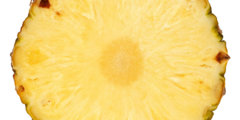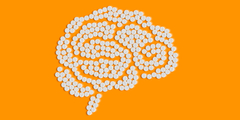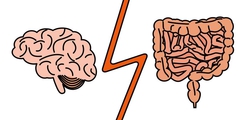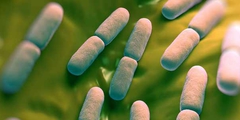
Om nog niet geheel duidelijke redenen is de afgelopen decennia het aantal personen met de diagnose autisme wereldwijd enorm gestegen. Een brede biopsycho-ecologische aanpak kan helpen om deze trend beter te begrijpen en te beïnvloeden. Leefstijl, voeding en verstorende omgevingsfactoren blijken het darmmicrobioom, het vruchtwater en het neuro-immuunsysteem een autistisch profiel te kunnen bezorgen. Een passend behandelplan besteedt dan ook aandacht aan eetpatroon, darmmicrobioom en het biopsycho-ecologische leefsysteem in brede zin.
Beste bezoeker, u heeft geen toegang.
Enkel (web)abonnees hebben toegang tot tijdschriftartikelen. Het webabonnement is nog in de maak.
U kunt zich wel alvast (gratis) registreren en tal van andere webartikelen raadplegen!
Verschenen in
Referenties
[1] Margaret Grace Stineman & Joel E. Streim. The Biopsycho-ecological Paradigm: A Foundational Theory for Medicine.Physical Medicine and Rehabilitation (PM&R). November 2010 Volume 2, Issue 11:1035–1045. DOI: https://doi.org/10.1016/j.pmrj.2010.06.013
[2] Sudo N, Chida Y, Aiba Y, et al. Postnatal microbial colonization programs the hypothalamic-pituitaryadrenal system for stress response in mice. J Physiol-London 2004;558:263-75.; Carabotti M, Scirocco A, Maselli MA, Severi C. The gut-brain axis: interactions between enteric microbiota, central and enteric nervous systems. Ann Gastroenterol. 2015 Apr-Jun; 28(2):203-209.
[3] Susannah Selber-Hnatiw, Chiara Gamberi, et al. Human Gut Microbiota: Toward an Ecology of Disease. Front. Microbiol., 17 July 2017 | doi.org/10.3389/fmicb.2017.01265
[4] Francesco Petrelli, Luca Pucci and Paola Bezzi.Astrocytes and Microglia and Their Potential Link with Autism Spectrum Disorders. Front. Cell. Neurosci., 12 February 2016 doi.org/10.3389/fncel.2016.00021
[5] Andrew P. Allen, Timothy G. Dinan, Gerard Clarke, and John F. Cryan. A psychology of the human brain–gut–microbiome axis.Soc Personal Psychol Compass. 2017 Apr; 11(4): e12309. Published online 2017 Apr 18. doi:10.1111/spc3.12309; Edgar Bittner Silva, Rosangela Filipini, Carlos Bandeira de Mello Monteiro, Vitor E Valenti, Sionara Melo Figueiredo de Carvalho, Rubens Wajnsztejn, Maria do Carmo Andrade Duarte de Farias, Cícero Cruz Macedo, and Luiz Carlos de Abreu. The biopsychosocial processes in autism spectrum disorder. Int Arch Med. 2013; 6: 22. doi: 10.1186/1755-7682-6-22; Soumya Basu and Peter Parry. The autism spectrum disorder ‘epidemic’: Need for biopsychosocial formulation. Australian & New Zealand Journal of Psychiatry. First Published October 29, 2013. doi.org/10.1177/0004867413509694; Lind, S. E. and Williams, D. M. (2011). Behavioral, biopsychosocial, and cognitive models of autism spectrum disorders. In J. Matson and P. Sturmey (Eds.) International Handbook of Autism and Pervasive Developmental Disorders. (pp. 99-114). New York: Springer.
[6] Jašarević E, Howerton CL, Howard CD, Bale TL.Alterations in the Vaginal Microbiome by Maternal Stress Are Associated With Metabolic Reprogramming of the Offspring Gut and Brain.Endocrinology. 2015 Sep; 156(9): 3265-76. doi: 10.1210/en.2015-1177
[7] Burrus CJ et al. A biochemical rationale for the interaction between gastrointestinal yeast and autism. Med Hypotheses. 2012 Dec; 79(6):784-5.
[8] Finegold SM, Dowd SE, Gontcharova V, Liu C, Henley KE, Wolcott RD, Youn E, Summanen PH, Granpeesheh D, Dixon D, Liu M, Molitoris DR, Green JA III. Pyrosequencing study of fecal microflora of autistic and control children. Aerobe. 2010 Aug; 16(4): 444-53. doi: 10.1016/j.anaerobe.2010.06.008
[9] Williams BL, Hornig M, Parekh T, Lipkin WI. Application of novel PCR-based methods for detection, quantitation, and phylogenetic characterization of Sutterella species in intestinal biopsy samples from children with autism and gastrointestinal disturbances. MBio. 2012; 3(1): 1-11. DOI:10.1128/mBio.00261-11
[10]Derrick MacFabe. Autism: Metabolism, Mitochondria, and the Microbiome. Glob Adv Health Med. (Global Advances in Health and Medicine) 2013 Nov; 2(6): 52–66. doi: 10.7453/gahmj.2013.089
[11] Dulantha Ulluwishewa, Rachel C. Anderson, Warren C. McNabb, Paul J. Moughan, Jerry M. Wells, Nicole C. Roy. Regulation of Tight Junction Permeability by Intestinal Bacteria and Dietary Components.The Journal of Nutrition, Volume 141, Issue 5, 1 May 2011, Pages 769-776, https://doi.org/10.3945/jn.110.135657
[12] Marleen Nys. Nieuwe psycho-neuro-immunologische inzichten: Darmhyperpermeabiliteit en depressie. Natura Foundation Magazine: Het Dossier. (Themaspecial over depressie), 2008.
[13] Chaithanya Chelakkot, Jaewang Ghim & Sung Ho Ryu. Mechanisms regulating intestinal barrier integrity and its pathological implications. Experimental & Molecular Medicine volume 50, Article number: 103 (2018)
[14] Hymowitz SG, Filvaroff EH, Yin JP, Lee J, Cai L, Risser P, Maruoka M, Mao W, Foster J, Kelley RF, Pan G, Gurney AL, de Vos AM, Starovasnik MA. IL-17s adopt a cystine knot fold: Structure and activity of a novel cytokine, IL-17F, and implications for receptor binding. EMBO J. 2001;20:5332-5341.
[15] Zhang X, Angkasekwinai P, Dong C, Tang H. Structure and function of interleukin-17 family cytokines. Protein Cell. 2011;2:26-40.
[16] Jon Baio, Lisa Wiggins, Deborah L. Christensen, Matthew J Maenner, Julie Daniels, Zachary Warren, Margaret Kurzius-Spencer, Walter Zahorodny, Cordelia Robinson; Rosenberg, Tiffany White, Maureen S. Durkin, Pamela Imm, Loizos Nikolaou, Marshalyn Yeargin-Allsopp, Li-Ching Lee, Rebecca Harrington, Maya Lopez, Robert T. Fitzgerald, Amy Hewitt, Sydney Pettygrove, John N. Constantino, Alison Vehorn, Josephine Shenouda, Jennifer Hall-Lande, Kim Van Naarden-Braun, Nicole F. Dowling. Prevalence of Autism Spectrum Disorder Among Children Aged 8 Years — Autism and Developmental Disabilities Monitoring Network, 11 Sites, United States, CDC data from 2014. Surveillance Summaries. April 27, 2018. 67(6);1-23.
[17] MacFabe DF, Cain DP, Rodriguez-Capote K, Franklin AE, Hoffman JE, Boon F, Taylor AR, Kavaliers M, and Ossenkopp KP. Neurobiological effects of intraventricular propionic acid in rats: possible role of short chain fatty acids on the pathogenesis and characteristics of autism spectrum disorders. Behav Brain Res. 2007 Jan 10; 176(1):149-69
[18] Duerden, E. G., Mak-Fan, K. M., Taylor, M. J., & Roberts, S. W. (2012). Regional differences in grey and white matter in children and adults with autism spectrum disorders: An activation likelihood estimate (ALE) meta-analysis. Autism Res, 5, 49–66. doi: 10.1002/aur.235; Nickl-Jockschat, T., Habel, U., Michel, T. M., Manning, J., Laird, A. R., Fox, P. T., et al. (2012). Brain structure anomalies in autism spectrum disorder—A meta-analysis of VBM studies using anatomic likelihood estimation. Human Brain Mapping, 33, 1470–1489. doi: 10.1002/hbm.21299; Stanfield, A. C., McIntosh, A. M., Spencer, M. D., Philip, R., Gaur, S., & Lawrie, S. M. (2008). Towards a neuroanatomy of autism: A systematic review and meta-analysis of structural magnetic resonance imaging studies. Eur Psychiatry, 23, 289–299. doi: 10.1016/j.eurpsy.2007.05.006; Via, E., Radua, J., Cardoner, N., Happe, F., & Mataix-Cols, D. (2011). Meta-analysis of gray matter abnormalities in autism spectrum disorder: Should Asperger disorder be subsumed under a broader umbrella of autistic spectrum disorder? Archives of General Psychiatry, 68, 409–418
[19] Calhoun VD, Miller R, Pearlson G, Adalı T. The chronnectome: time-varying connectivity networks as the next frontier in fMRI data discovery. Neuron. 2014;84(2):262-274. doi:10.1016/j.neuron.2014.10.015; Rashid B, Blanken LME, Muetzel RL, et al. Connectivity dynamics in typical development and its relationship to autistic traits and autism spectrum disorder. Hum Brain Mapp. 2018;39(8):3127-3142. doi:10.1002/hbm.24064
[20] Michael C. Toh and Emma Allen-Vercoe. The human gut microbiota with reference to autism spectrum disorder: considering the whole as more than a sum of its parts. (Supplement issue: The microbiome in autism spectrum disorder). Microbial Ecology in Health & Disease 2015, 26: 26309 - http://dx.doi.org/10.3402/mehd.v26.26309
[21] Alexis Mosca, Marion Leclerc and Jean P. Hugot. Gut Microbiota Diversity and Human Diseases: Should We Reintroduce Key Predators in Our Ecosystem? Frontiers in Microbiology, 31 March 2016. doi.org/10.3389/fmicb.2016.00455.
[22] Nishat Tasnim, Nijiati Abulizi, Jason Pither, Miranda M. Hart, and Deanna L. Gibson. Linking the Gut Microbial Ecosystem with the Environment: Does Gut Health Depend on Where We Live? Frontiers in Microbiology 2017; 8: 1935 doi: 10.3389/fmicb.2017.01935
[23] David S. Thaler. Toward a microbial Neolithic revolution in buildings. Microbiome,2016; 4:14 doi: 10.1186/s40168-016-0157-2
[24] Shelly A. Buffington, Gonzalo Viana Di Prisco, Thomas A. Auchtung, Nadim J. Ajami, Joseph F. Petrosino and Mauro Costa-Mattioli. Microbial Reconstitution Reverses Maternal Diet-Induced Social and Synaptic Deficits in Offspring. Cell, Volume 165, ISSUE 7, P1762-1775, June 16, 2016 doi: 10.1016/j.cell.2016.06.001
[25] S.M. O’Mahony, G. Clarke, Y.E. Borre, T.G. Dinan, J.F. Cryan. Serotonin, tryptophan metabolism and the brain-gut-microbiome axis. Behavioural Brain Research 277 (2015):32–48. http://dx.doi.org/10.1016/j.bbr.2014.07.027
[26] G B Rogers, D J Keating, R L Young, M-L Wong, J Licinio, and S Wesselingh. From gut dysbiosis to altered brain function and mental illness: mechanisms and pathways. Molecular Psychiatry. 2016 Jun; 21(6): 738–748. doi: 10.1038/mp.2016.50
[27] Azziz, R., Chang, W. Y., Stanczyk, F. Z. & Woods, K. Effect of bilateral oophorectomy on adrenocortical function in women with polycystic ovary syndrome. Fertil. Steril. 99, 599-604 (2013).
[28] Adriana Cherskov, Alexa Pohl, Carrie Allison, Heping Zhang, Rupert A. Payne, Simon Baron-Cohen. Polycystic ovary syndrome and autism: A test of the prenatal sex steroid theory. Translational Psychiatry, 2018; 8 (1) DOI: 10.1038/s41398-018-0186-7
[29] Shermel B. Sherman, Nadeen Sarsour, Marziyeh Salehi, Allen Schroering, Blair Mell, Bina Joe & Jennifer W. Hill. Prenatal androgen exposure causes hypertension and gut microbiota dysbiosis, Gut Microbes. 9:5, 2018: 400-421. doi: 10.1080/19490976.2018.1441664.
[30] Pedro J Torres, Martyna Siakowska, Beata Banaszewska, Leszek Pawelczyk, Antoni J Duleba, Scott T Kelley and Varykina G Thackray. Gut Microbial Diversity in Women With Polycystic Ovary Syndrome Correlates With Hyperandrogenism. The Journal of Clinical Endocrinology & Metabolism, Volume 103, Issue 4, 1 April 2018, pp. 1502–1511. doi: 10.1210/jc.2017-02153
[31] Rui Liu, Chenhong Zhang, Yu Shi, Feng Zhang, Linxia Li, Xuejiao Wang, Yunxia Ling, Huaqing Fu, Weiping Dong, Jian Shen, Andrew Reeves, Andrew S. Greenberg, Liping Zhao, Yongde Peng, and Xiaoying Ding. Dysbiosis of Gut Microbiota Associated with Clinical Parameters in Polycystic Ovary Syndrome. Front Microbiol. 2017; 8: 324. doi: 10.3389/fmicb.2017.00324
[32] K Kosidou, C Dalman, L Widman, S Arver, B K Lee, C Magnusson & R M Gardner. Maternal polycystic ovary syndrome and the risk of autism spectrum disorders in the offspring: a population-based nationwide study in Sweden. Molecular Psychiatry 21:1441–1448 (2016).
[33] Adriana Cherskov, Alexa Pohl, Carrie Allison, Heping Zhang, Rupert A. Payne & Simon Baron-Cohen. Polycystic ovary syndrome and autism: A test of the prenatal sex steroid theory. Translational Psychiatry. Volume 8, Article number: 136 (2018).
[34] Baron-Cohen, Simon; Lombardo, Michael V.; Auyeung, Bonnie; Ashwin, Emma; Chakrabarti, Bhismadev; Knickmeyer, Rebecca (June 2011). "Why are Autism Spectrum conditions more prevalent in males?".PLOS Biology.PLOS. 9 (6): e10011081. doi:10.1371/journal.pbio.1001081.
[35] Joost Meeusen. Een veelomvattende nutritionele behandeling van autisme. Voedingsgeneeskunde 5, 2018: 46-48.
[36] Kaplan, Melvin. Seeing through new eyes : changing the lives of children with autism, Asperger syndrome and other developmental disabilities through vision therapy. London Philadelphia: Jessica Kingsley Publishers, 2006 (zie met name pp. 160-165)
[37] Barrett, B.T. Invited Review: A critical evaluation of the evidence supporting the practice of behavioural vision therapy. Ophthalmic and Physiological Optics, 29, 2009, pp. 4 - 25.
[38] R.A. Yunes, E.U. Poluektova, M.S. Dyachkova, K.M. Klimina, A.S. Kovtun, O.V. Averina, V.S. Orlova and V.N. Danilenko. GABA production and structure of gadB/gadCgenes in Lactobacillus and Bifidobacterium strains from human microbiota. Anaerobe. Vol. 42, December 2016, pp. 197-204.doi.org/10.1016/j.anaerobe.2016.10.011
[39] Lv Wang, Claus T. Christophersen, Michael J. Sorich, Jacobus P. Gerber, Manya T. Angley and Michael A. Conlon. Low Relative Abundances of the Mucolytic Bacterium Akkermansia muciniphila and Bifidobacterium spp. in Feces of Children with Autism. Appl Environ Microbiol. 2011 Sep; 77(18): 6718–6721. doi: 10.1128/AEM.05212-11
[40] H. Wong and C. Hoeffer. Maternal IL-17A in autism. Exp Neurol. 2018 Jan;299(Pt A):228-240. doi: 10.1016/j.expneurol.2017.04.010. Epub 2017 Apr 25.
[41] Gloria B. Choi, Yeong S. Yim, Helen Wong, Sangdoo Kim, Hyunju Kim, Sangwon V. Kim,Charles A. Hoeffer, Dan R. Littman, and Jun R. Huh. The maternal interleukin-17A pathway in mice promotes autism-like phenotypes in offspring. Science. 2016 Feb 26; 351(6276): 933–939.doi: 10.1126/science.aad0314
[42] James B. Adams, Tapan Audhya, Elizabeth Geis, Eva Gehn, Valeria Fimbres, Elena L. Pollard, Jessica Mitchell, Julie Ingram, Robert Hellmers, Dana Laake, Julie S. Matthews, Kefeng Li, Jane C. Naviaux, Robert K. Naviaux, Rebecca L. Adams, Devon M. Coleman, and David W. Quig. Comprehensive Nutritional and Dietary Intervention for Autism Spectrum Disorder—A Randomized, Controlled 12-Month Trial. Nutrients. 2018 Mar; 10(3): 369. Published online 2018 Mar 17. doi: 10.3390/nu10030369.
[43] Juul FE, Garborg K, Bretthauer M, Skudal H, Øines MN, Wiig H, Rose Ø, Seip B, Lamont JT, Midtvedt T, Valeur J, Kalager M, Holme Ø, Helsingen L, Løberg M, Adami HO. Fecal Microbiota Transplantation for Primary Clostridium difficile Infection. N Engl J Med. 2018 Jun 28;378(26):2535-2536. doi: 10.1056/NEJMc1803103. Epub 2018 Jun 2.
[44] Rossignol DA, Genuis SJ, and Frye RE. Environmental toxicants and autism spectrum disorders: a systematic review. Transl Psychiatry. 2014 Feb; 4(2): e360. Published online Feb 11, 2014. doi: 10.1038/tp.2014.4
[45] Lee E, Cho J, Kim KY. The Association between Autism Spectrum Disorder and Pre- and Postnatal Antibiotic Exposure in Childhood: A Systematic Review with Meta-Analysis. Int J Environ Res Public Health. 2019 Oct 22;16(20). pii: E4042. doi: 10.3390/ijerph16204042.
[46] Zie p. 357 van: Galloway, Tamara S. Micro- and Nano-Plastics and Human Health. In: Bergmann, M., Gutow, L. and Klages, M. (Eds.) Marine Anthropogenic Litter. Berlin: Springer, 2015. (343-366). https://doi.org/10.1007/978-3-319-16510-3_13
[47] Catherine R. Lammert, Elizabeth L. Frost,Ashley C. Bolte, Matt J. Paysour, Mariah E. Shaw, Calli E. Bellinger, Thaddeus K. Weigel, Eli R. Zunder and John R. Lukens. Critical Roles for Microbiota-Mediated Regulation of the Immune System in Prenatal Immune Activation Model of Autism. J Immunol July 2, 2018. doi: https://doi.org/10.4049/jimmunol.1701755.
[48] Auyeung B, Baron-Cohen S, Ashwin E, Knickmeyer R, Taylor K, Hackett G. Fetal testosterone and autistic traits. Br. J. Psychol 100 (Pt 1): 1-22 (2009). doi: 10.1348/000712608X311731.
[49] S Baron-Cohen, B Auyeung, B Nørgaard-Pedersen, D M Hougaard, M W Abdallah, L Melgaard, A S Cohen, B Chakrabarti, L Ruta, and M V Lombardo. Elevated fetal steroidogenic activity in autism. Molecular Psychiatry (2014), DOI: 10.1038/mp.2014.48
[50] Windham, G.C., Lyall, K., Anderson, M., Kharrazi, M. J Autism Dev Disord (2016) 46: 478. https://doi.org/10.1007/s10803-015-2587-2. First online: 14 September 2015
[51] Tewarit Sarachana, Minyi Xu, Ray-Chang Wu, Valerie W. Hu. Sex Hormones in Autism: Androgens and Estrogens Differentially and Reciprocally Regulate RORA, a Novel Candidate Gene for Autism. PLOS One. Published: February 16, 2011. https://doi.org/10.1371/journal.pone.0017116
[52] Manhai Long, Mandana Ghisari, Lisbeth Kjeldsen, Maria Wielsøe, Bent Nørgaard-Pedersen, Erik Lykke Mortensen, Morsi W. Abdallah & Eva C. Bonefeld-Jørgensen. Autism spectrum disorders, endocrine disrupting compounds, and heavy metals in amniotic fluid: a case-control study. Molecular Autism 10, 1 (2019). https://doi.org/10.1186/s13229-018-0253-1
[53] Scifo R, Cioni M, Nicolosi A, Batticane N, Tirolo C, Testa N, Quattropani MC, Morale MC, Gallo F, Marchetti B. Opioid-immune interactions in autism: behavioural and immunological assessment during a double-blind treatment with naltrexone. Ann Ist Super Sanita. 1996;32(3):351-9.
[54] Elchaar GM, Maisch NM, Augusto LM, Wehring HJ. Efficacy and safety of naltrexone use in pediatric patients with autistic disorder. Ann Pharmacother. 2006 Jun; 40(6): 1086-95. Epub 2006 May 30
[55] Elaine A. Moore, Samantha Wilkinson. “LDN in Autism Spectrum Disorders (Chapter 6).” In: The Promise of Low Dose Naltrexone Therapy: Potential Benefits in Cancer, Autoimmune, Neurological and Infectious Disorders. Jefferson (NC): McFarland, 2009. (pp.95-101).
[56] Dae-Wook Kang, James B. Adams, Ann C. Gregory, Thomas Borody, Lauren Chittick, Alessio Fasano, Alexander Khoruts, Elizabeth Geis, Juan Maldonado, Sharon McDonough-Means, Elena L. Pollard, Simon Roux, Michael J. Sadowsky, Karen Schwarzberg Lipson, Matthew B. Sullivan, J. Gregory Caporaso and Rosa Krajmalnik-Brown. Microbiota Transfer Therapy alters gut ecosystem and improves gastrointestinal and autism symptoms: an open-label study. Microbiome. 2017; 5: 10. Published online Jan 23, 2017. doi: 10.1186/s40168-016-0225-7
[57] Mayada Elsabbagh, Gauri Divan G, Yun-Joo Koh, Young Shin Kim, Shuaib Kauchali, Carlos Marcin, Cecilia Montiel‐Nava, Vikram Patel, Cristiane S. Paula, Chongying Wang, Mohammad Taghi Yasamy, Eric Fombonne. Global prevalence of autism and other pervasive developmental disorders. Autism Res. 2012;5(3):160-179. doi:10.1002/aur.239.
[58] Jun Liu, Guo-bing Wan, Ming-shi Huang, George Agyapong, Tian-le Zou, Xue-ying Zhang, Yen-Wenn Liu, Yi-qing Song, Ying-Chieh Tsai, Xue-jun Kong. Probiotic Therapy for Treating Behavioral and Gastrointestinal Symptoms in Autism Spectrum Disorder: A Systematic Review of Clinical Trials. Current Medical Science 39(2):173-184,2019. DOI https://doi.org/10.1007/s11596-019-2016-4
[59] Rachael Patusco and Jane Ziegler. Role of Probiotics in Managing Gastrointestinal Dysfunction in Children with Autism Spectrum Disorder: An Update for Practitioners. Adv Nutr 2018;9:637–650; doi: https://doi.org/10.1093/advances/nmy031.
[60] Kaluzna-Czaplinska J, Blaszczyk S. The level of arabinitol in autistic children after probiotic therapy. Nutrition, 2012,28(2):124-126.
[61] Parracho H, Gibson GR, Knott F, et al. A double-blind, placebo-controlled, crossover-designed probiotic feeding study in children diagnosed with autistic spectrum disorders. Int J Probiotics and Prebiotics, 2010,5(2):69-74.
[62] Shaaban SY, El Gendy YG, Mehanna NS, et al. The role of probiotics in children with autism spectrum disorder: A prospective, open-label study. Nutr Neurosci, 2018, 21(9):676-681
[63] West R, Roberts E, Sichel LS, Sichel J. Improvements in gastrointestinal symptoms among children with autism spectrum disorder receiving the Delpro® probiotic and immunomodulator formulation. J Prob Health 2013;1(1):102.





